This installment is cribbed substantially from a lecture I gave at Penn State in 2012. If it looks familiar to a few, that is why. While it doesn't make much mention of Christianity, by now readers should be habituated to trying to see this series on the history, mechanics, and psychology of capitalism with one eye on the Gospels. -SG
In the early 80s, macro-economic forces were shaping a new form of international economy and corresponding changes in US foreign policy. The story could begin as far back as World War I, but for the sake of brevity, we will begin the story during just a few years prior, in 1973.
In 1973, as a protest against the US rescue
of Israel from an impending defeat by the Egyptians in the Yom Kippur
War, Arab nations implemented an oil embargo against the US, creating
day-long gas lines that broke up only when filling stations pumped out
their last drop of gasoline.
Oil prices rose dramatically, creating a
tremendous windfall profit for oil producing states. Oil was
denominated in US dollars, and those additional dollars were invested at
Wall Street by the same oil producers who were withholding gasoline
from the US.
Wall Street does not sit on money. Wall
Street firms are rentier capitalists, that is, they use money to make
more money through royalties (like interest); and so the glut of petrodollars from the Arab oil states was
converted by Wall Street into vast development loans for poorer countries through the International Monetary Fund, especially
in Latin America.
These loans, not unlike the subprime
mortgages we know and love today, had adjustable rates. During the
latter Carter years, the United States – for reasons we won’t elaborate
here – suffered something the economists hadn’t anticipated:
simultaneous lack of growth – stagnation – and rapid inflation, which
came to be known as stagflation.
Federal Reserve Chair Paul Volcker
responded to this with something called the Volcker Shock, that is,
since inflation was the greater danger to the rentier capitalists, he
raised the interest rate from 7.5% to 21.5%, doubling US unemployment
rates, while making large creditors whole.
These elevated interest
rates were passed along, via Wall Street institutions, to those Latin
American countries that had received the aforementioned development
loans, creating a crisis in Latin America.
This shock doctrine lasted
from 1979 to 1982, and when Reagan was in office in 1982, Mexico
announced that it was about to default on its Wall Street loans,
stranding Wall Street with more than $100 billion in losses.
Not for the first time, and certainly not
for the last, the US government stepped in to bail out Wall Street’s
finance capitalists. This was a bailout loan to Mexico, but the intent
and the urgency was to ensure that Wall Street didn’t take a bath on the
Mexican default. The vehicle for loans to cover the previous loans to
Mexico was the International Monetary Fund, an international institution
formed in the latter years of World War II, in which the US exercises a
very dominant role. But this time, the bailout loans had something
attached to them in addition to interest, called “conditionalities.”
These conditions included several
ultimatums – that Mexico’s internal markets be opened to US-based
investors, including US multinational corporations, that labor and
environmental standards be rolled back to increase the rate of profit in
order to pay back the restructured loans, and that regressive tax
structures be implemented – also to assist in the payback of the loans.
A structural imperative, though not one of the specified conditions,
was also that Mexican enterprises – in particular agriculture – be
converted from production for local consumption to export products to
get more of the US dollars required to service the restructured but now
vastly expanded external debt.
Using similar crises, the IMF proceeded
over the next few years to impose these conditionalities – called
structural adjustment programs – on the majority of nations of the
global periphery, effectively undermining their national sovereignty
inasmuch as the IMF, the World Bank, and the World Trade Organization,
all US-dominated pre-market institutions (remember the earlier discussion of Polanyi's theses on pre-market institutions) that manage the so-called
“free” market, came to dictate the economic policies of these
structurally-adjusted nations.
While these were originally contingent
measures used to take advantage of Mexico’s crisis, the Reagan
administration soon realized that they had stumbled onto a model that could be used around the world to open home markets to US
investment under conditions that were very advantageous to US
investors. Moreover, it was a way to capture the political
leadership of debtor nations in a dollar-dominated system, which
would come to be known as neoliberalism.
I realize that this is a fly-over at
several thousand feet, and that I am overlooking many of the details of
this process, but I only want to establish a kind of historical context
wherein neoliberalism is intelligible, in order to explain subsequent
claims about US foreign policy, which has been largely formed by the
imperatives of neoliberal policy.
Neoliberalism itself is now in a bit of a
crisis, because the same financial establishment that was turned loose
on the world by the emergence of neoliberalism has both worn out its
welcome around the world – creating great popular resistance to its
diktat – but it has created tens of trillions of dollars of fictional
value from runaway speculation, threatening the very currency around
which the entire system is based.
The US-dominated financial system, called
the “Dollar-Wall Street regime” by Peter Gowan and Susan Strange, also
found a way to exercise managerial control over first world economies
like Western Europe and emerging market economies like China and
Brazil. This power was exercised not in the US role as creditor, but in
the US role as debtor.
This story actually begins at the end of
World War II and continues to the present. The Soviet Union – itself
savagely wounded by the war – attempted to secure a post-war partnership
with its capitalist war allies in order to regroup. More than 27
million Soviet citizens had been killed, and cities were in ruins all
the way to Stalingrad. When the Truman administration opted for the
National Security State as an industrial strategy that could capitalize
on the ramp-up for the war, it needed an enemy to justify the
expenditures of what Eisenhower would christen the “military-industrial
complex.” The overtures from the USSR for a post-war peace were rejected
in favor of official hostility by Truman. This provocative posture
locked Western Europe into a military alliance with the US, and put an
official stamp on the US foreign policy of “containment.”
This inaugurated a long period of proxy
war, the first in Korea, later in Vietnam. While the US was enjoying
the fruit of post-war dollar dominance, Keynesian high employment, and a
robust trade surplus, however, the militarization of US domestic and
foreign policy created a mounting national debt. The US was indebting
itself to other metropolitan nations. The US was borrowing money from
Europeans to finance its military adventures in Asia, then running
printing presses to make up the difference. Because the dollar’s value
was fixed for redemption at 1/35th of an ounce of
gold, the US could print money without fear of draining the dollar of
its value, which was being used for capital investment in Europe.
In the theoretical market, the value of a
currency is determined by how it balances against an aggregate of
commodities. Too few units of currency and prices fall. Too many units
of currency and prices rise. The latter is inflation – the nemesis of
loan sharks and bankers because it reduces the future purchasing power
of collected principle and interest. So the dollar was losing
purchasing power on the market, even as it remained exchangeable for
European currencies at the same fixed rate.
The US was printing more money, but because
the dollar was fixed to gold, the Europeans were watching their markets
flooded with overvalued dollars, which they had to accept. The market
may have been saying that a dollar should be redeemable for francs or
marks or pounds at one rate, but the post-war currency-control regime
determined that Europeans had to continue to give away purchasing power
with every currency exchange for devalued dollars. The US was exporting
its inflation to Europe by repaying its military expansion debts to
Europeans in under-valued dollars.
So when the first Special Forces advisers
went to Vietnam in 1957, the system that appeared so robust on the
surface was already creating the conditions for its next crisis.
The Europeans, later buying gold elsewhere
at well above the $35 per troy ounce, held onto their dollar denominated
assets, hoping to redeem their dollars at something approaching their
initial investment later. But by 1967, with the Vietnam War driving the
US deficit to record levels, France started cashing dollars out for US
gold, draining the US gold stock. The Keynesian system of tightly
controlling finance capitalists, which included fixed currency exchange
rates pegged to a gold-backed dollar, began to collapse in the face of
the US decision to militarize its domestic and foreign policy.
On March 31, 1968, millions of Americans
heard Lyndon Johnson announce on television that he would not run again
for the presidency, and that he would not substantially escalate the
Vietnam War, despite the strategic setback of the Tet offensive nearly
two months earlier.
Unperceived by the public at large, the
point finally had been reached at which depletion of the U.S. gold
holdings had abruptly altered the country’s military policy. As
financial historian Michael Hudson noted:
“The European financiers were forcing peace on us. For the first time in American history, our European creditors had forced the resignation of an American president.”
But when the 1968 elections arrived, we saw
a scenario that is familiar to us again. Democrats could not publicly
argue for an end to the war, because withdrawal would mark the
destruction of the myth of US military invincibility. The options
available in response to the collapse of the US Gold Pool were (1)
withdrawal from Vietnam, (2) continue the war and accept further losses
of gold and with it the erosion of US global power, or (3) force the
abandonment of the entire Bretton Woods regime beginning with the gold
standard. Because the Democrats alienated a huge fraction of their
base by refusing to oppose the war, Republican Richard Nixon was
elected. In 1971, he selected Option 3. He abandoned the gold standard
for the US dollar.
This was a staggering checkmate against the
US’s alleged global allies. They had to do something with their
trainloads of dollars to prevent their uncontrolled devaluation.
Quoting Hudson,
“By going off the gold standard at the precise moment that it did, the United States obliged the world’s central banks to finance the U.S. balance-of-payments deficit by using their surplus dollars to buy US Treasury bonds, whose volume quickly exceeded America’s ability or intention to pay.
“Twenty-five years [after WWII], the United States [discovered] the inherent advantage of being a world debtor. Foreign holders of any nation’s promissory notes are obliged to become a market for its exports as the means of obtaining satisfaction of their debts.”
As the old saying goes, “if you owe the
bank a thousand dollars, you have a problem. If you owe the bank a
billion dollars, the bank has a problem.”
Nixon had not only erased US debt held by
allies and forced perpetual European support for US military
expenditures with the threat of tearing everyone’s financial house down,
he had opened the way for rentier capitalists to escape the limitations
put on it during the New Deal. That is precisely why Peter Gowan
referred to Nixon’s risky destruction of the Bretton Woods fixed
currency exchange rates as the “global gamble.”
New system: debtor imperialism.
Susan Strange referred to the new system as
“casino capitalism.” The rentier capitalists were free to speculate
without constraints; but more importantly, the US government, in
collusion with Wall Street, had a new weapon to use against recalcitrant
nations. Domestic currencies could be speculatively attacked; which is
exactly what the US did to several Asian countries in 1998, which
unexpectedly almost crashed the world economy. The threat of attack on
currencies obliged central banks abroad to hold US dollars – in the
form of US Treasury Bonds – in reserve, as a defense against speculative
attacks on their currencies. These nations then became US creditors;
but they were the banks who – as in the banker’s joke – had the problem.
To this day, no one – including China,
about which there is a great deal of financial fear-mongering – can
afford to begin a run on the dollar. Too many nations hold too many
dollars to sell the dollar down without cutting off their noses to spite
their faces. And yet all these creditor nations know that the US has
neither the capacity nor the intention of paying back those loans.
China holds over a trillion dollars in US
Treasury Bonds. Japan holds almost a trillion. The United Kingdom
holds over 400 billion. Brazil holds more than 200 billion. The list
goes on. If China were to initiate – as some China-phobes suggest – a
cash-out of its t-bills, and that cash-out caused a run on the dollar
destroying half its value, China would lose more than half a trillion
dollars in purchasing power. This is a game of chicken that the US has, so far, won every time.
The key to dominance in the world of the late 20th and early 21st
Centuries has been dependency… interdependency, but of a very unequal
nature. We see this in really bad, really patriarchal marriages. A
husband depends on his wife for the management of the household, for a
lot of unpaid labor, and for the care of children, and the wife depends
on the husband for economic security; but in the event of a divorce, we
find that the wife comes out much worse than the husband, giving the
husband a threat to hold over the head of the wife. They depend on one
another, but that interdependence is not synonymous with equal status or
parity of power.
This is how US foreign policy is
constructed for the most part, as interdependencies in which the US is
the dominant partner. And there are few things that human beings depend
on more urgently than food; which brings me to a subject that is
imbricated with finance, but not the same as finance.
Money is not theoretically necessary for
life. Human life sustained itself before general purpose money. Human
life cannot be sustained, however, without its material basis in food.
If I might, I’d like to actually go deeper
on the topic of food than we generally do, into the realms of chemistry
and biology, for just a moment. I want to say a few things about energy
and nitrogen.
If you touch your friend or neighbor, appropriately, of course, you will find that he or she is a heater.
You are all warm. That heat is thermal energy that is part of the
overall energy system that constitutes your existence as an organism, as
a mammal, as a primate, and as an omnivore. You eat plants and animals
that have energy stored in them. The plant energy that animals eat
comes from the sun, whose energy is stored in the plants by
photosynthesis.
One of the chemical components of our world
that is necessary for most plant growth, therefore necessary for food,
and therefore necessary for our survival, is nitrogen.
Oddly enough, after Timothy McVeigh blew up
a federal office building in Oklahoma City, everyone – even
non-farmers – came to know that fertilizer is made with nitrogen.
Yet nitrogen is the most abundant element
in the atmosphere, so why should anyone have to “produce” it as a
fertilizer? We live our entire lives literally swimming in the stuff.
As it turns out, atmospheric nitrogen, like
atmospheric oxygen, is a Siamese twin. It consists of two, fused
molecules: N2, as it were. Plants have to break this down into single
molecules, then mix it with other stuff, in order to turn sunlight into
food. The process is called biological nitrogen fixation. Prior to human intervention, this fixation process was accomplished by prokaryotes (or non-nucleated bacteria) and diazotrophs (or ammonia-making bacteria.)
During World War I, the introduction of new technology, i.e. the
machinegun, and the adherence to pre-machinegun tactical doctrines, led
to huge armies being first mowed down like grass, then trapped facing
each other from pestilential trenches. One of the bright ideas for
taking advantage of this horror-film stalemate was the idea of killing
the enemy with poisonous gas.
During the war, Fritz Haber, a
German-Jewish chemist, was appointed director of the Berlin-based Kaiser
Wilhelm Institute for Physical Chemistry.
One of his jobs became the development of
chemical weapons. He would eventually invent a gaseous chemical called
Zyklon-B, a cyanide derivative, which would be used to wipe out millions
of his own co-religionists; but during WWI he was preoccupied with
chlorine and ammonia for the development of poisonous gases for the
battlefield.
His other preoccupation was nitrogen
fixation. He learned how to do that, synthetically, by combining
hydrogen and N2 under heat and pressure, along with an iron isotope and
aluminum oxide as catalysts. He had already patented this process
before the war; but it would take Carl Bosch, the eventual co-founder of
I. G. Farben (the company that marketed Zyklon-B) to
commercialize the process… which laid the basis for a population
explosion from 1.6 billion in 1900 to more than 7 billion today. What
he’d made was chemical fertilizer, and it meant that even land that was
unfit for agricultural cultivation could be rendered “productive.” The
food that feeds that additional 5 billion people is largely produced
with the assistance of chemical fertilizers and chemical poisons.
But “heat and pressure” are not some
infinite essence like space, nor are they immediately available like
atmospheric nitrogen. They are transient phenomena that must be created
through some procedure; in this case, using fossil hydrocarbons… lots of
them. Haber was looking at a crisis created by the depletion of guano –
bat and bird droppings used as fertilizer – mostly collected from the
islands off the coast of Chile; so he fell on a system that depended on
another exhaustible resource: fossil fuel.
After WWII, American farmers were using
prodigious quantities of chemical fertilizer across prodigious expanses
of arable land, along with a new chemical weapon itself, nerve gas… or
organophosphates, as insecticides, expanding their harvests far beyond
the American public’s capacity to consume.
The American manufacturing base had also
expanded during the war, and given that the US did not suffer the
devastation that Europe and Asia did during the war, the US emerged from
the war as a uniquely powerful actor. The other variable in the
expansion of food production was the thoroughgoing mechanization of
agriculture, another net consumer of fossil energy. The US began to
build farm machinery; and as part of its goal of maximizing profit for
farm machinery industries, as well as agricultural chemicals, it
began to promote something called “developmentalism” for the so-called
under-developed nations.
In 1943, the Rockefeller Foundation, Ford
Motor Company, and the Mexican government established a joint venture
called – in English – the International Center to Improve Corn and
Wheat. Standard Oil – a Rockefeller company – was manufacturing
fertilizer, and Ford was building tractors. This was the beginning of
the organized effort by first world corporations, with the active
support of the US government, to push agricultural commodities into
these so-called underdeveloped nations. By 1959, they had opened rural
development academies in Pakistan, and by 1963 in the Philippines. These academies were performing research and development on
high-yielding cultivars of wheat, corn, and rice. By the time of the
Nixon administration, 120 of the largest agribusiness multinationals had
established a joint program with the United Nations Food and
Agriculture Organization.
The transformation in agriculture that
followed was called the Green Revolution, a term coined in 1968 by US
Agency for International Development Director William Gaud.
If ever there were a revolution from above,
this was it. And it did accomplish a great deal. Caloric intake from
cereal grains worldwide increased 30 percent per capita by 1990, and the
prices of grains fell. The availability of more staple grains also
supported a doubling of world population between 1960 and 2000.
Yet these very general statistics don’t
tell the whole story. There were a number of qualitative changes that
accompanied these statistical quanta. One early condition of World Bank
development loans was that recipient nations industrialize their
agriculture.
Smallholders were pushed off land to make
way for large monoculture fields. Mechanization cut the number of
necessary field workers to a fraction, and a process began whereby
millions of formerly rural people – who were monetarily poor, but
capable of self-reliant subsistence agriculture – were pushed into
cities, where they came to rely more directly on the mass-produced
staple cereals, which they now had to buy, and where they provided a
windfall to urban manufactories of desperately cheap labor.
Peripheral nation agricultural production
was being exported, in order to get precious US dollars for use in
international markets and to service external debts. The agri-barons of
the periphery were not feeding their own countries, but engaging in
monoculture for export, like coffee, sugar, and bananas (ergo the term,
“banana republic”).
Urban hunger is a specter that most leaders understand only too well.
I witnessed two food riots when I was in Haiti, and I can say they were among the most memorable experiences of my life.
Political leaders know very well that mass
urban hunger is a recipe for political destabilization, and they avoid
it at all costs. Because many of these nations were exporting crops,
they fell short in providing basic nutrition to their own growing urban
populations.
The United States, however, was uniquely
positioned to take advantage of this situation, because the agricultural
subsidies of the New Deal, originally meant to rescue family farms, had
been carried forward to the benefit of large agribusiness corporations
that were pushing the American family farm into the dustbin of history.
Price supports for US grains meant that agribusiness could produce as
much grain as possible, and for every bushel produced the government
would pay them a subsidy.
This, along with the arable land mass of
the American Midwest, quickly led to massive overproduction of US grain
in the face of periodic grain shortages around the world, which gave US
agribusiness unprecedented pricing power in grain markets.
In 1973, Secretary of State Henry
Kissinger said that the dominance of US grain production in the world
was a foreign policy weapon that was more powerful than nuclear bombs.
Henry Kissinger
Grain was on a lot of political minds those
days. Hubert Humphrey, the 1968 Democratic challenger for the
presidency, had received an illegal campaign contribution of $100,000 – a
fact that would emerge during the Watergate hearings. The same
contributor would also give the Nixon administration $25,000 to assist
in its cover-up of the Watergate break-in. These were not insubstantial
sums then, as they seem now.
Not many people had then heard of this
fountain of largesse, whose name was Dwayne Andreas. Andreas pushed
through a historic grain sale to the Soviet Union for the Nixon
administration, worth $700 million, with his company as the middleman.
That company was named Archer Daniels Midland.
It was the next year, however, when Green
Revolution food production was exposed to another vulnerability, the
aforementioned Arab oil embargo.
It is here that we can see how the history
of the Green Revolution as an instrument of US foreign policy
interweaves with the history of neoliberal finance – which we covered
earlier – that began its gestation with the Nixon administration.
By 1973, the US was running not a trade
surplus but a deficit of $6.4 billion. Even more momentously and
permanently, US domestic production of crude oil had peaked and was now
known to be in a permanent and irreversible decline that would increase
US dependence on imports of this commodity into the foreseeable future. Oil remained the principle feedstock of American domestic
agriculture, and of the Green Revolution that was articulating the
decolonizing periphery into a new, neo-colonial order. At the
same time, the US would become increasingly dependent on fossil energy
imported from abroad, not merely to power its machines and transport,
but to eat and to maintain the power of the US over food markets
worldwide.
Even the Soviet Union had been pulled into
the American grain-trade orbit by Nixon, proving Kissinger’s thesis that
food was more powerful than nukes.
The increasing dependency of peripheral
nations on American agricultural goods, as well as American support for
the industrial capitalist model being adopted for peripheral nation
export agriculture, would lead to decreases in national per-capita food
production as well as financial and ecological bankruptcy.
Nixon broke up the old order; but the new
order was not firmly established except serendipitously by the Reagan
administration. In the interim, after a period of three years
stewardship of the White House by the immanently forgettable Gerald
Ford, the next elected president would have a dual-resume: a Naval
officer and an agribusiness CEO.
Under Jimmy Carter, a southern agribusiness
plutocrat posing as a good ol’ boy (a peanut “farmer”), an interesting
thing happened. Something we Southern folk used to call “white liquor”
or “white lightning” became legal and began magnetizing massive cash
flows from US taxpayers in the form of corn subsidies.
Corn liquor has been produced for many
years by rural scofflaws. My own father did a short stretch in the
hoosegow when he was discovered with a car trunk full of it in the
1930s.
When Nixon was taking money from Dwayne
Andreas, the CEO of the sugar and corn conglomerate, Archer Daniels
Midland, ADM was concocting a new scheme that would simultaneously
justify more “farm” subsidies to agribusiness and claim to address the
“energy crisis” of 1973, which was also such a windfall to Wall Street.
The scheme was to make massive quantities of corn liquor, which is of
course flammable, and re-christen it “ethanol.” This was proposed as an
“energy independence” measure for the US. It is made, naturally, with
sugar and corn.
ADM found a friend in Jimmy Carter.
Carter called the energy crisis the “moral
equivalent of war,” and his administration exempted ethanol-spiked
gasoline from a federal fuel tax.
Carter began a loan program to build
ethanol plants, which was halted by the Reagan administration… for a
while, until farm lobbyists paid serial visits to Capitol Hill,
whereupon the Reagan administration recanted.
To this very day, neither party will challenge agribusiness subsidies; and to this day, both parties are avid ethanol boosters.
It was this influence, in conjunction with
neoliberal “free trade” policies, that allowed US grain producers to
begin a process called agricultural dumping. Dumping is introducing a
surplus into a foreign market below market value, which results in local
producers’ inability to compete. Taxpayer-subsidized US corn, for
example, is still routinely dumped into foreign markets at prices often
as little as 30 percent of market value. This leads to bankrupted
local markets, and a growing and increasingly poor urban population that
becomes hostage to an imperial food market.
A Mexican farmer who grows traditional corn
is wiped out by genetically modified, chemical-industrial corn that is
subsidized by a foreign power. His family loses their land to debt,
moves to the city, where they may or may not find work to get money to
feed themselves, and barring that, they may take the risk of illegal
migration to the north to find work in the United States. One seldom
hears about neoliberalism or agricultural dumping when the subject of
illegal immigration comes up in the United States; but the connections
are clear. US policies have created the conditions that make mass
migration inevitable.
After many NAFTA provisions went into
effect that allowed US dumping in Mexico, between 1997 and 2004,
taxpayer-subsidized US corn exports increased by 413%, while Mexican
corn production fell by 50% based on a 66% devaluation of Mexican corn.
In the same period, US soybean production increased by 159%, and
Mexican soybean production decreased by 83% based on a 67% devaluation.
Mexican pork production fell by 40%, corresponding to a 707% increase
in US exports. Pork itself is not directly subsidized, but the corn
that feeds industrial pork is. It is not a coincidence that NAFTA
corresponds to the most massive wave of Mexican immigration to the
United States in history.
So the combination of developmental
imperatives to mechanize and enclose agriculture for monocrop
production, as well as agricultural dumping by the United States has
created a situation where most of the rapidly urbanizing world is now
dependent on US grain or US seeds and chemicals in order to eat. US
foreign policy pertaining to food has become what the late Ivan Illich
called “a war on subsistence.” The androcentric cliché for holding
power over others as “having them by the balls,” might better be
replaced by “having them by the bellies.”
US international power politics combines
the neoliberal debt traps with food monopolization as an effective
mechanism of indirect control over a good deal of the globe. This is
not, however, sufficient to exercise the kind of total dominance the US
would require to halt the very real decay of US power that results from
various kinds of imperial over-reach. The debt system is not
sustainable. The energy system upon which the current system depends is
not sustainable. The material resources upon which economic expansion
is based are finite. And the tolerance of others is reaching its
limits.
The fallback position of any imperial
power, when indirect controls are no longer effective, is direct control
in the form of violence. That is one of the reasons the United States –
with some of the best naturally defensible borders in the world, and an
impossibly large land mass for any would-be invader – maintains a
military force that is more expensive than the combined military forces
of the rest of the world. Calling the War Department the Department of
Defense is perhaps the most ironic example of PR-speak you might
encounter. The US military is almost exclusively dedicated to missions
of aggression abroad.
Moreover, the force component of US foreign
policy is not merely the uniformed services, it includes a shadowy and
well-financed covert operations component that allows military actions
by US-directed surrogates to provide an element of plausible deniability
to US actions that might undermine ideological claims of commitment to
principles like “freedom,” “human rights,” and “democracy.”
Neoliberal theology asserts the primacy of
the private, the value of small government; but neoliberal practice has
been massively underwritten by the state. The assurance of the market
economy – as Karl Polanyi pointed out almost 70 years ago – requires a
network of regulatory institutions. Without the state’s affirmative
actions on behalf of the international business class, the system would
collapse. Begin by thinking about how six battle groups from the US
Navy are required to ensure the flow of fossil hydrocarbons into the
industrialized metropolis, and you can extrapolate from there.
The failed attempt to conquer Iraq in 2003,
while it certainly involved oil, was also part of an effort to maintain
a forward deployed US military capable of strategic intervention far
from home. The Cold War had ended, and the disposition of US military
forces had become obsolete. They needed to be redeployed from positions
that were calculated to contain the USSR into positions that would give
the United States more capacity to intervene in energy-rich Southwest
Asia, to put the imperial hand – as it were – on the spigots of global
energy.
The goal of the Iraq invasion was permanent
bases; but instead the Bush administration managed to win the Iran-Iraq
war on behalf of Iran. The Obama administration has decided that the
next best thing is to forward base near the Middle East and in the
Asia-Pacific Theater to prepare to contain China; and the Obama
administration has vastly expanded the role of the covert operations
forces, as well as armed mercenaries, in its expansion of the
Afghanistan War into Pakistan and increased covert operations against
Iran.
Obama’s administration was instrumental in the execution and consolidation of the coup against the democratically elected president of Honduras in 2009, just as the Bush administration
was in the failed coup against the democratically elected president of
Venezuela in 2002, and its successful coup against the democratically
elected government of Haiti in 2004. In two cases, the offending
parties – President Chavez of Venezuela and President Zelaya of Honduras
– were guilty of defying the Washington Consensus, that is, of opposing
neoliberalism. President Aristide had merely criticized neoliberalism.
More than strategic interests drive the
reliance on military operations. In the United States, the Department
of Defense has become a substitute export market for US industries. The
reason the taxpayers are not bailing out Lockheed Martin, Northrup
Grumman, Boeing, General Dynamics, Raytheon, KBR, L3 Communications,
SAIC, Dyncorp, Hewlett-Packard, and a host of other major American
corporations, including General Electric, Motorola, Goodrich, and
Westinghouse, is that the margin of earnings that ensure their continued
viability as capitalist enterprises comes from DOD contracts. If war
spending were ended tomorrow, the US would experience a dramatic loss of
jobs across a wide spectrum of Congressional districts that have
hitched to the DOD pork wagon.
American foreign policy is amphibious. It
operates through both the wet depths of public institutions and the dry
lands of private institutions, and it has an integrated public-private
perception management apparatus.
One of the key advantages of the
public-private partnership is that foreign policy is insulated from
accountability to those below those institutions on the social
hierarchy. The boundaries are blurred, via contracts and memoranda of
understanding, between the US public sector – with its administrative
apparatus, and its military and intelligence establishment with their
vast budgets – and the private sector, composed of publicly funded
“non-governmental organizations,” think tanks, foundations, and an army
of horizontally-integrated perception managers.
Those perception managers use mass media as
a conformity-producing web of influence that reaches right into the
living rooms of a US culture that has 2.24 television sets per
household, running an average of six hours and 47 minutes a day, 2,476
hours a year. To appreciate the latent power of television, realize
that the average college class has a student in tow for three hours a
week, approximately 45 hours for an entire course, excluding
out-of-classroom study.
The limits of public discourse are
established de facto by a media that operates on the same liberal market
principles as the people who own them and exercise hegemony within the
government and in those sectors sometimes called civil society. The
media, the governing apparatus, and civil society are in fact three
faces of the same dominant interests in the same epoch.
In saying this, I am obliged to clear up a
common misunderstanding of what this means and what I mean to say. It
is easy to jump from the very general outline I have presented of three
aspects of US foreign policy – finance, food, and force – to the
conclusion that I mean to say, or that these facts tend to support the
idea that, there is a conscious group of the conspiring powerful who
direct the world. On the contrary, I want to emphasize that this system
has evolved through a series of contingencies, and that its
stability is maintained precisely because it is what some systems
theorists call self-organized. It’s most powerful actors are in many
ways as constrained, or more constrained, by neo-neo-liberalism – or
whatever you choose to call this particular period – than most of us
are. President Obama is far less free, for example, to say the kinds of
things I can say here as an unemployed grandfather.
I, on the other hand, do not have the legal power to send US troops to war, or to call them home.
We each play our parts, and while some
conspiracies have always been part of the terrain of politics, they are
generally reactive, and far less determinative of large-scale outcomes
than, say, changes in the built environment, demographic shifts, or
institutional inertia. Many of the most pivotal events in history
emerge unexpectedly from long-standing trends that have gone unnoticed
or ignored until they reach a breaking point – the 2008 housing bubble
crash being a good recent example.
Remember, in our saga about the birth of
neoliberalism, there was no straight line, but a confluence of events
and contingent decisions: French buying US gold, Nixon dropping the
gold standard, the Egyptian war for the Sinai, the American decision to
airlift TOW missiles to the Israelis, the decision of Arab oil producers
to embargo oil to the US, the US balance of payments deficit, Nixon
drops fixed currency exchange rates, rising oil prices creating
petrodollars, the petrodollar tsunami being converted into opportunistic
development loans, the Mexican threat of default, and so it goes.
These were not plots, but actions and reactions, each producing a number
of unintended or unanticipated consequences, which stimulated new
actions and reactions.
The belief in a conspiratorial view of
history seems to me to be a psychological reaction to the fear of
chaos. If the world is not as one would like it, at least a
conspiratorial view of history suggests that history as a process is
still subject to human control, and that once we wrest control from the
unjust conspirators, the world can be made right again. Far too often, the conspiracy-fetish turns finally on the perennial scapegoat - Jews.
This unpredictability, this sense of
instability that compels some of us to reach for order in chaos with a
history of conspiracy, ironically, has been produced by the current
political milieu, one wherein neoliberalism has disembedded economies
from local control and re-embedded them in national and transnational
institutions, and those institutions are themselves now experiencing a
loss of control in the face of unanticipated changes.
Structural adjustment programs have become
political lightning rods that are igniting mass unrest around the
world. Green Revolution agriculture has spawned megacities that are
entropic black holes, teeming with desperation and crime. The US
military, long considered the guarantor of last instance for the world
order, has proven to be both the least cost effective institution on the
planet and a perennial source of new resistance and unintended
outcomes. In Iraq and Afghanistan, the myth of US military
invincibility was shattered; and the costs of the Southwest Asia wars
have bled the US Treasury white. Offshoring of US industry and the
political empowerment of rentier capitalists – Wall Street – that was
accomplished through foreign policy, has transformed much of the US
domestic population not merely into wage workers, but debt slaves.
Consumer debt in the United States is above
$2.4 trillion. In 2010, consumer indebtedness amounted to $7,800 for
every man, woman, and child in the United States. 33% of that debt is
in revolving credit, that plastic you carry in your pockets. The rest
is in mortgages, student loans, automobile loans, and other
non-revolving credit schemes. You students collectively owe $556
billion dollars. Good luck with that.
US household leverage, the ratio of debt to
disposable income, was 55% in 1960. By 1985, that number was 65%.
Today, household debt is 133% of household disposable income.
Yet when the crisis of fictional value
created by Wall Street came home to roost, trillions in bailout money
were awarded to Wall Street, while Main Street was left holding its
debts. Wall Street, according to the experts who work the Wall
Street-Washington nexus, was too big to fail. Generations into the
future are now saddled with paying for these bailouts. We are being
structurally adjusted, which has always been a euphemism for privatizing
the gains and socializing the losses.

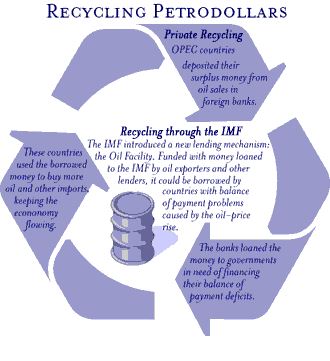

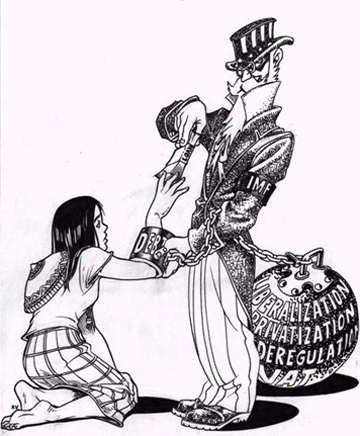
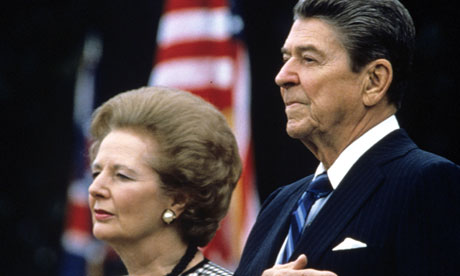
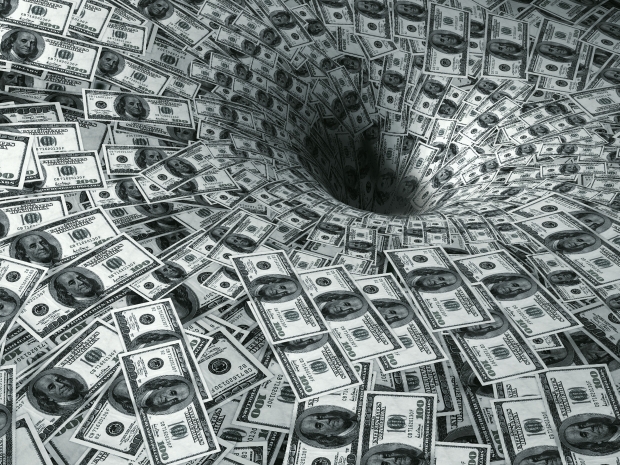
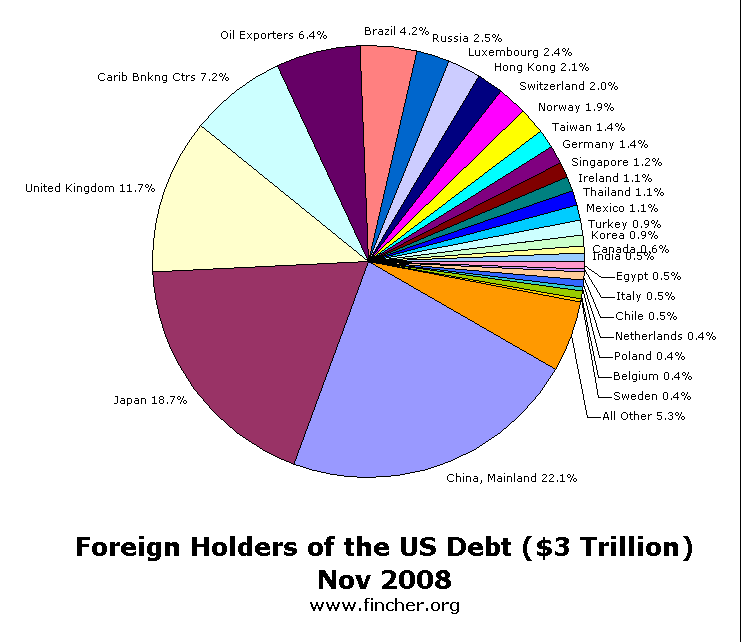


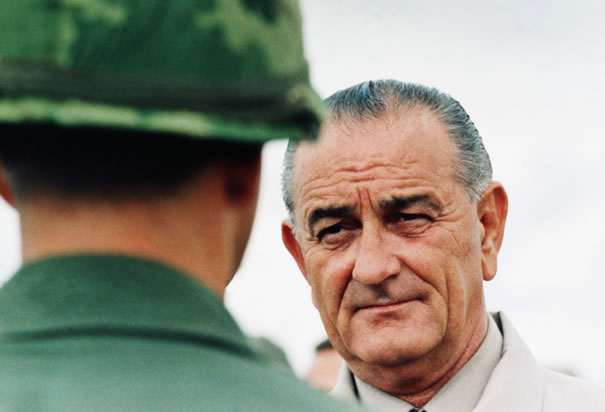


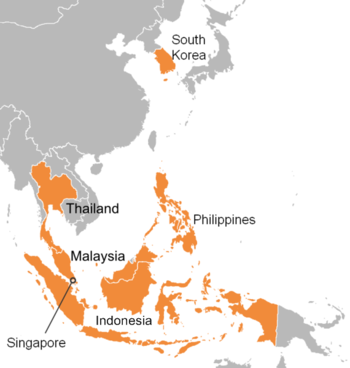













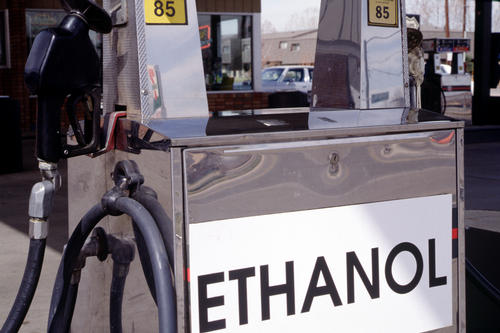










Would a communistic, resource based economy in which every one works for negative profit (a loss), solve economy problems relating to thermodynamics?
ReplyDeleteICC Mortgage And financial Services,Is a sincere and certified private Loan company approved by the Government,we give out international and local loans to all countries in the world,Amount given out $2,500 to $100,000,000 Dollars, Euro and Pounds.We offer loans with a dependable guarantee to all of our clients. Our loan interest rates are very low and affordable with a negotiable duration.
ReplyDeleteAvailable now
MORTGAGE, PERSONAL, TRAVEL, STUDENT, EXPANSION OF BUSINESS AND NEW UNSECURED, SECURE, CONSOLIDATE
AND MORE
Available now..
Apply for a loan today with your loan amount and duration, Its Easy and fast to get. 4% interest rates and monthly
installment payments.
{nicholasbrush.icc@gmail.com}
Regards,
Nicholas Brush